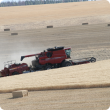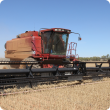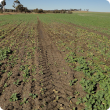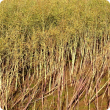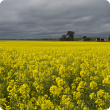Canola
Western Australia is the major canola growing state in Australia producing over 50% of the nation’s 4 million tonnes each year.
The majority of WA canola is exported – generating about $1.2 billion for the state’s economy each year, with the Germany, Japan, UAE, Belgium, France and the Netherlands WA’s largest export canola markets in 2021/22.
WA canola is renowned for its high oil content – with the state often achieving higher oil contents than the rest of the nation.
The Department of Primary Industries and Regional Development supports the WA canola industry through agronomic research and development; and pest and disease identification and management.
See Also
- Western Australian canola industry
- Canola essentials - growing a successful canola crop
- Canola diagnostic tool
- Critical nutrient levels for canola in Western Australia
- Tactical break crop agronomy project: canola and pulse agronomy trials and information
- Canola Agronomy Research in Western Australia bulletin
Filter by search
Filter by topic
- (-) Remove Climate, land & water filter Climate, land & water
- Soils (8) Apply Soils filter
- Managing soils (6) Apply Managing soils filter
- Climate & weather (6) Apply Climate & weather filter
- Wheat (5) Apply Wheat filter
- Barley (4) Apply Barley filter
- Frost (4) Apply Frost filter
- Pulses (3) Apply Pulses filter
- Lupins (3) Apply Lupins filter
- Soil nutrients (2) Apply Soil nutrients filter
- Water repellence (2) Apply Water repellence filter
- Pests, weeds & diseases (2) Apply Pests, weeds & diseases filter
- Pastures (2) Apply Pastures filter
- Production & postharvest (1) Apply Production & postharvest filter
- Pests (1) Apply Pests filter
- Pest insects (1) Apply Pest insects filter
- Oats (1) Apply Oats filter
- Pasture management (1) Apply Pasture management filter
- Soil acidity (1) Apply Soil acidity filter
- Soil compaction (1) Apply Soil compaction filter
- New horticulture crops (1) Apply New horticulture crops filter
- Weeds (1) Apply Weeds filter
- Waterlogging (1) Apply Waterlogging filter
- Soil salinity (1) Apply Soil salinity filter
- Soil constraints (1) Apply Soil constraints filter
- Feeding & nutrition (1) Apply Feeding & nutrition filter
- Diseases (1) Apply Diseases filter
- Crop weeds (1) Apply Crop weeds filter
- Crop diseases (1) Apply Crop diseases filter
- Carbon Farming - related pages (1) Apply Carbon Farming - related pages filter
- Drought (1) Apply Drought filter
- Grains Research & Development (1) Apply Grains Research & Development filter
- Livestock & animals (1) Apply Livestock & animals filter
- Land use (1) Apply Land use filter
- Horticulture (1) Apply Horticulture filter
- Grains research & development (1) Apply Grains research & development filter
- Livestock management (1) Apply Livestock management filter


